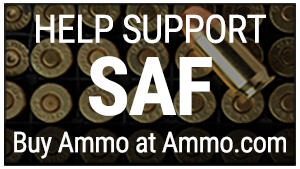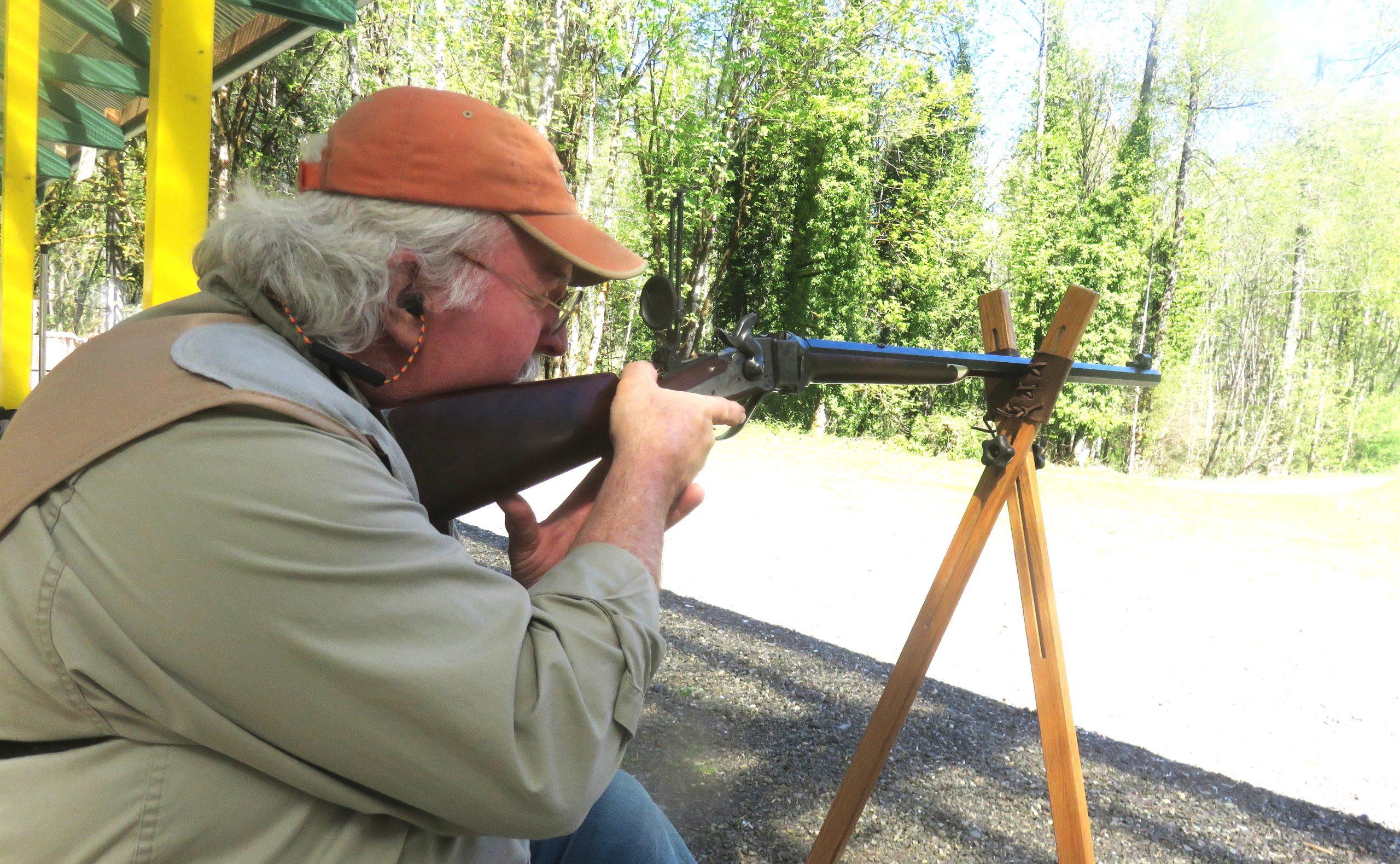
By Mike Nesbitt | Contributing editor
Preparing for any shooting match is something to take seriously.
For me, getting ready for the coming Paper Patch Match of the Black River Buffalo Runners was something I was looking forward to, almost more eager to work on those preparations than actually shooting in the match. That’s rather unfair to say because our centerfire black powder cartridge shooting matches are a lot of fun. But so is getting ready for those matches. And while making preparations, I’d have some leeway in what I’d be shooting. Once the match got started, I’d have to stay with my selection…
There is much to do prior to participating in any match, anywhere in the country, and this principle definitely applies to my region. Maybe this can be explained as we go along…

Let’s go back a month or so ago. I thought I’d be using my heavy .44/77 Sharps in the looming match, the rifle I call “Hefty Hannah.” Part of my anticipation for using that outstanding rifle again was found in the new bullet mold which was recently purchased for it. That single cavity mold was for a 410-grain dual diameter paper patched bullet, Accurate Molds’ #44-410P.

The dual diameter bullet interested me quite highly, especially because its diameter at the bullet’s base was .438-inch. In addition to that, it has the dual radii at the bullet’s nose, ending in a flat point about .18-inch across. That makes it look much like the old original Sharps bullets for the .44/77 and I do appreciate using authentic appearing ammo.
More specifically, a couple of years ago I took an original factory loaded .44/77 cartridge apart just to see what it was really made of. That cartridge, which had no headstamp, was assumed to be an old UMC (Union Metallic Cartridge Company) load with the large Berdan primer. The bullet weighed 405 grains and the powder charge was a 77-grain load, which sort of confirms that it was a UMC cartridge because the Sharps company never loaded their .44-2 ¼-inch cartridge (that’s its official name) with more than 75 grains of powder.
Back to that bullet. It was a tapered paper patched bullet which came out of the mold measuring .438-inch across the base. Yes, I had been looking for a .438-inch diameter bullet for my .44/77 ever since.
Perhaps some background about paper patching would be appreciated. Lead bullets are wrapped with paper to prevent the bullets’ soft lead from riding on or rubbing on the inside of the gun barrel’s bore. Allowing lead to rub directly on the rifling causes leading. We can say that the paper patched bullets were our first jacketed bullets. Today’s rifle bullets are jacketed with the copper alloys for the very same primary reason, to prevent leading.
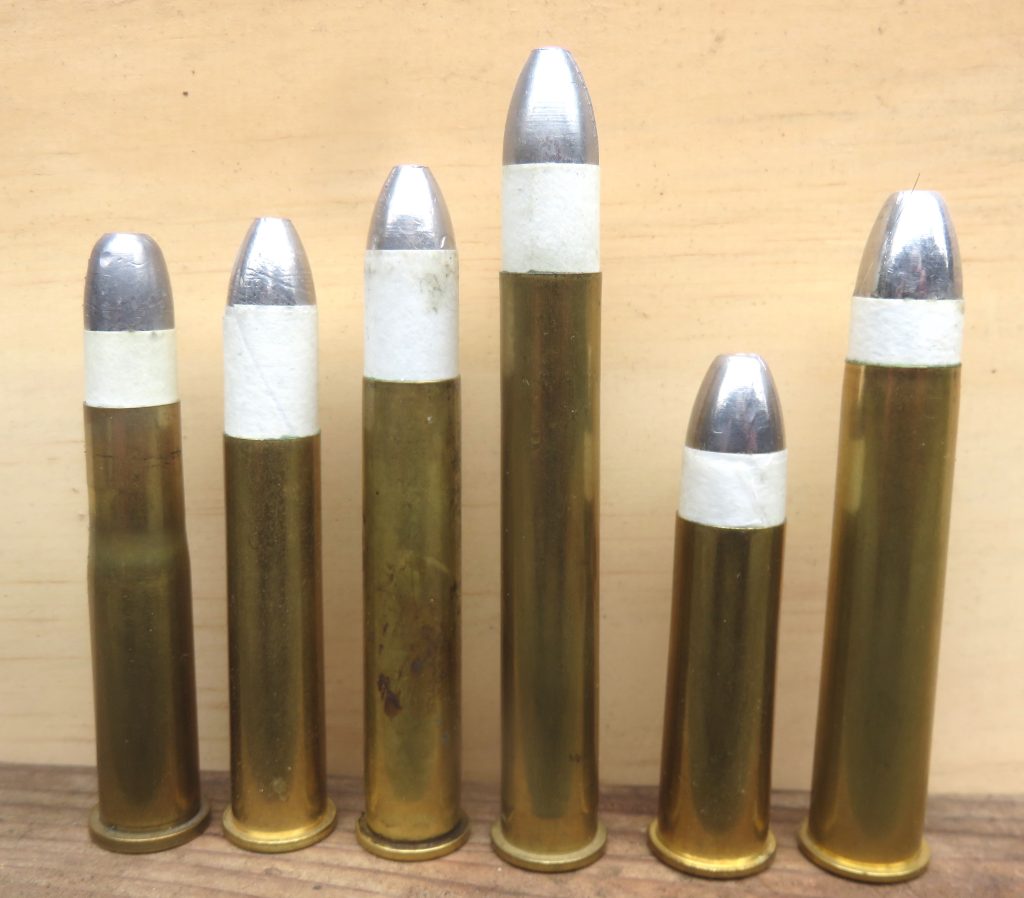
Paper Patching
With paper patched bullets, the leading might not be 100% controlled because the rifling in the barrel will often cut through the paper’s double wrapping so some of the bullet’s lead might still touch the bore. And, with the paper patch, its job is over and completed once the bullet leaves the barrel, so the paper quickly falls away, allowing the bullet to continue on its flight to the target. While paper patching might not be 100% effective against leading, it is still protective of the bore enough to use, especially with the soft alloy bullets that are common to shooting with the black powder cartridges.
Patching the bullets is relatively easy. This was done by buffalo hunters of the 1870’s right in camp after they had cast the bullets to reload the empties from the day’s hunt.
My favored way of patching the bullets is to dampen the patch, hold the point of the patch near the top of the bullet, then stretch the patch slightly while holding it with the other hand at 90-degrees, then roll the bullet down my finger so that both wraps are completed. Then twist the excess at the bullet’s base into the hollow cup before standing the bullet on its base so the patch will dry.
My preferred patching paper is available from Buffalo Arms Company; their 9 Pound Onion Skin paper. They sell 100 standard 8½-by-11-inch sheets at a time. That usually is enough for a lot of paper patching. Look for that on their web site.
To cut the patches, I use a cutting board to slice the sheets of paper into strips, and the width of the strips is dependent on the length of the bullet being patched. As examples, the strips for patching the .44/77 bullet are 7/8-inch wide while the strips for making patches for the longer 500-grain bullets, such as for my .45/70, are 1 1/8-inch wide. Then the individual patches are cut from the strips.
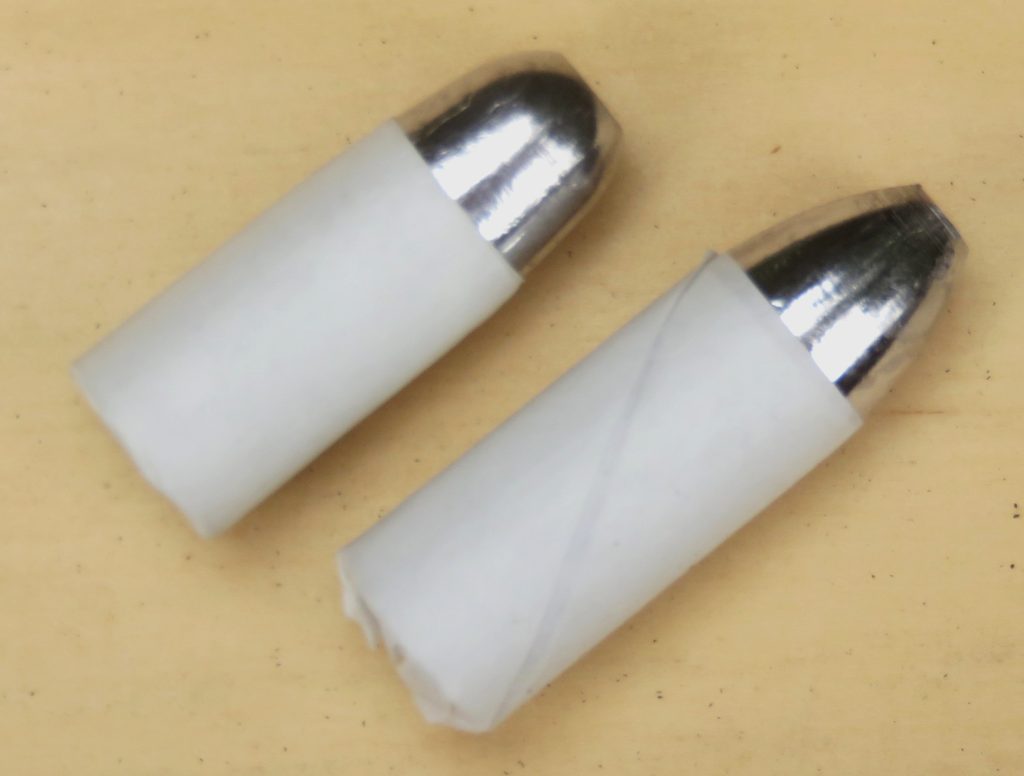
For cutting the patches from the paper strips, a patch template is the easiest way to go. Those templates, made of brass, are available from outfits like Buffalo Arms or C. Sharps Arms. However, I often make my own templates out of writing tablet-backing cardboard. Anything that is stiff like that will do.
To make the template, multiply the rifle’s caliber (such as .45) times pi, or 3.14, and then multiply times 2, for the double wrapping. For the .45, this amounts to about 2 ¾ inches. Cut both ends of the template at a 30-degree angle but be sure the top side of the template and the bottom side both measure the same length. The template will be in the shape of a parallelogram.
Then, to cut the patches, simply hold the template on the paper strips and cut with either a razor-sharp knife or a sharp pair of scissors. I often hold two of the paper strips together to cut two patches at once but to other paper patchers, that is slow…
Start Shooting
My .44/77-caliber 410-grain bullets loaded over 75 grains of Olde Eynsford 2F powder, with a grease “cookie” between card wads, cut out of milk carton, sandwiched over the powder but under the bullets. Those roared with delight but I was not getting the accuracy I was actually hoping for. On the other hand, it was very pleasing to be shooting with Hefty Hannah again and I had not been shooting that rifle much since I “traded sides” and began shooting left-handed. I was wondering if I could handle that rifle on the left shoulder and, indeed, I can.
More loading and shooting needs to be done with the .44/77 but before I got to that, I remembered that a good batch of .45/70 loads with the 500-grain paper patched bullets was left over from the Quigley match last year. Those were given a good try in my Bridgeport with the 10X MVA “A” scope (Montana Vintage Arms) and the 28-inch heavy barrel made by C. Sharps Arms. That ammo had been prepared to be used in the Ryan Rifle and in my Bridgeport, they worked rather well.
Those cartridges were loaded with 500-grain paper patched bullets, which had been cast in an old Tom Ballard mold. (Ballard passed away a few years ago and these are no longer available.) The loads I assembled used 63 grains of Swiss 1 ½ Fg under the .060-inch Walters’ wad, then a 1/8-inch grease cookie over the wad, followed by the cup-based paper patched bullets. They were fired at a target out at 100 yards and the rifle’s bore was wiped between shots.
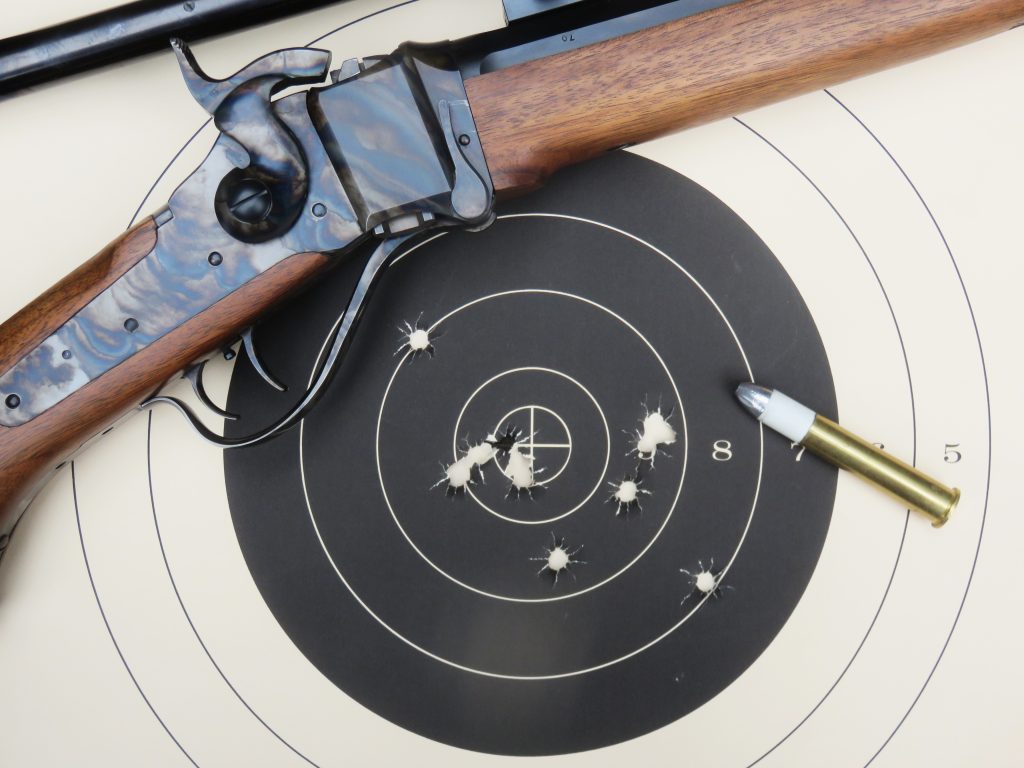
That target was pleasing enough that I eagerly cast another batch of those bullets with the Ballard mold, using a 30-1 lead-tin alloy. Those bullets were patched with the Buffalo Arms paper and then loaded, over 65 grains of Swiss 1 1/2Fg (just to give that a good try) with a .060” wad over the powder and a 1/8” lube cookie under the cup-based bullets. Then those were tried with ten shots at another 100-yard target.
My pal, Jerry Mayo was spotting for me while I did my shooting. After the first shot, he suggested that I just quit and take my rifle home. That shot scored a 10, possibly cutting the line into the X-ring. For these loads, even though I had included lube in the loading, the rifle’s bore was wiped with one moist patch between shots. Shooting continued until my ten shots were all fired and the score on that target was a 93-3X which certainly pleased me.
Then it was Jerry’s turn to shoot, as he was preparing for the same Paper Patch Match. He was also shooting a ’74 Sharps from C. Sharps Arms, but with a 30-inch barrel, and his loads also used bullets from a Ballard mold, but those slugs weighed 525 grains. He was using 63 grains of Swiss 1 ½ Fg powder under the bullets with just a wad between the bullets and the powder, no lube cookie.
Without lube under the bullets, the rifle’s barrel must be wiped between shots to control the fouling. Jerry and I talked about that while he was doing his shooting and he asked me why I wiped the bore on my rifle when lube was included in the load. I explained that wiping the bore makes for more consistent shot-to-shot accuracy. Previously I had not wiped the bore while shooting paper patched bullets, in the .44/77, and after three shots the accuracy began to drop noticeably. And the Paper Patch Match requires twenty shots, all in a row.
As for cleaning the bore between shots, I’ve found that the use of paper patch bullets which included the lube actually helps speed up the process. Jerry had discovered wiping the bore without lubing the bullets required a lot of patches soaked in black powder solvent, while my process is much easier in removing fouling, with as few as two patches.
Jerry finished his ten shots, and his score was a good one. We had both shot 93s and while his group was slightly tighter than mine.
Our preparations for the Paper Patch Match are not quite complete because we still must try our rifles and loads at 200 yards. In addition to that, we should do some shooting with our rifles and loads from the sitting position while using cross-sticks because that’s how we’ll actually be doing our shooting in the match.
The .45-70 Bridgeport is the same rifle I used in the Paper Patch Match last year, shooting the some 65-grain loads. But this year I feel like I’m better prepared and I’m certainly looking forward to shooting in this year’s match. How well my rifle and I do this time, of course, remains to be seen. My rifle acts like it’s ready for another shot at it, and I’ll really try to do my part.



